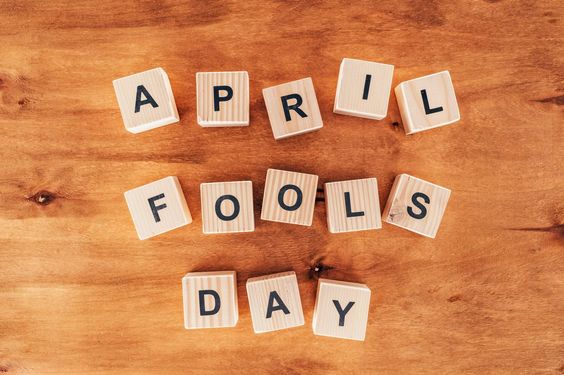April 1st, a day etched in the calendar as a canvas for mischief and merriment, has long been celebrated across cultures worldwide. From harmless pranks played among friends to elaborate hoaxes executed on a grand scale, the spirit of April Fools’ Day embodies the joy of laughter and the art of deception. Throughout history, certain pranks have transcended time, leaving an indelible mark on the annals of humor. Here, we delve into the depths of comedic history to unearth six of the greatest April Fools’ Day pranks ever executed.
The Swiss Spaghetti Harvest (1957)
In the spring of 1957, the British Broadcasting Corporation (BBC) aired a three-minute segment on its program Panorama, depicting a family in southern Switzerland diligently harvesting spaghetti from their very own “spaghetti tree.” Unbeknownst to the viewers, spaghetti does not grow on trees, but this fact eluded many who were captivated by the seemingly plausible footage. The hoax, known as the Swiss Spaghetti Harvest, fooled thousands of viewers who inundated the BBC with inquiries on how to grow their own spaghetti trees. This audacious prank earned recognition as one of the biggest hoaxes perpetrated by a reputable news outlet, solidifying its place in April Fools’ Day lore.
The Left-Handed Whopper (1998)
Fast forward to 1998, when Burger King unleashed its own April Fools’ Day prank upon the unsuspecting masses. In a full-page advertisement published in USA Today, the fast-food giant introduced the “Left-Handed Whopper,” purportedly designed specifically for the 32 million left-handed Americans. Although the burger itself remained unchanged, the announcement sparked a frenzy among both left-handed and right-handed customers, with many requesting the specially crafted burger. This clever marketing ploy showcased Burger King’s ability to engage consumers through humor and creativity, earning widespread attention and adoration.
The Eruption of Mount Edgecumbe (1974)
In the remote town of Sitka, Alaska, April 1, 1974, dawned with a surreal sight: smoke billowing ominously from the crater of Mount Edgecumbe. Residents feared the worst—a volcanic eruption was imminent. However, the source of the smoke was not volcanic activity but rather a meticulously planned prank orchestrated by local prankster Oliver Bickar. Armed with hundreds of tires, Bickar ignited a smoky spectacle in the crater, fooling residents and garnering national attention in the process. The prank, while initially alarming, ultimately left observers in awe of Bickar’s ingenuity and the town’s collective sense of humor.
Prank 4: The Taco Liberty Bell (1996)
In the spring of 1996, fast-food chain Taco Bell unleashed a prank of monumental proportions with its announcement that it had purchased the Liberty Bell, one of America’s most cherished landmarks. In a series of full-page advertisements published in major newspapers across the United States, Taco Bell declared that the historic bell would henceforth be known as the “Taco Liberty Bell.” The announcement sparked outrage and consternation among patriotic citizens, who viewed the purported sale as an affront to national heritage. However, the uproar was short-lived, as Taco Bell later revealed that the entire affair was a tongue-in-cheek April Fools’ Day prank, much to the relief and amusement of the nation.
The BBC’s Smell-O-Vision (1965)
In 1965, the British Broadcasting Corporation (BBC) showcased its penchant for prankery with a hoax that tantalized the senses and tickled the imagination. On an episode of the program Tomorrow’s World, the BBC introduced the concept of “Smell-O-Vision,” a revolutionary technology purportedly capable of transmitting aromas through television sets. Despite the outlandish nature of the claim, many viewers were intrigued by the possibility of experiencing scents alongside their favorite programs. The hoax served as a testament to the public’s fascination with emerging technologies and the power of media to capture the imagination. Though Smell-O-Vision may have remained a figment of the imagination, the prank left a lasting impression on viewers, highlighting the BBC’s ability to entertain and innovate in equal measure.
Google Gulp (2005)
In the digital age, technology companies have embraced April Fools’ Day as an opportunity to showcase their playful side, and none more so than Google. In 2005, the tech giant unveiled Google Gulp, a fictitious beverage promising enhanced intelligence and search engine optimization. Marketed as a revolutionary drink that analyzed the drinker’s DNA and adjusted brain chemicals accordingly, Google Gulp captured the imagination of consumers with its audacious claims and quirky flavors. To “obtain” the beverage, users were instructed to return bottle caps to local grocery stores—a comical twist that added to the whimsy of the prank. Though Google Gulp may have been a product of imagination rather than innovation, it served as a reminder of the company’s irreverent spirit and willingness to push the boundaries of imagination.
Celebrating the Art of Prankery
As April Fools’ Day dawns once again, we reflect on the rich tapestry of pranks and hoaxes that have graced this auspicious occasion throughout history. From the whimsical to the outrageous, these legendary pranks serve as a testament to the human capacity for creativity, humor, and mischief. Whether executed on a grand scale or shared among friends, April Fools’ Day pranks embody the joy of laughter and the spirit of camaraderie. As we revel in the merriment of the day, let us remember the timeless tradition of April Fools’ Day and the enduring legacy of the pranksters who dared to defy convention and spark laughter in the hearts of all who witnessed their feats of comedic brilliance.
